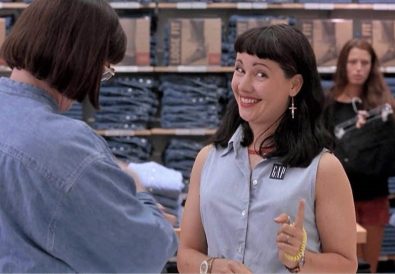In a time where textile waste is at an all-time high, it’s important to shop sustainably. But it’s not as easy for those over a size 14…
Even though this year has been well, a dumpster fire, I made it my goal at the beginning of 2020 to shop more sustainably when it came to my clothes. I’ve been using a reusable water bottle since 2015, and I’ve cut down on single-use plastics, but clothing waste creates a lot of problems for our environment, and I have a lot of clothes I don’t wear, but I also love buying new outfits. Do you see the problem? Buying just one single piece of clothing second-hand makes a difference, so I wanted to try my hardest to do my part in trying to help the planet starting with my own closet. There’s just one problem, I’m plus size.
So here’s the deal… As much as we all love walking into a fast fashion store like Zara, and H&M when you have nothing to wear on a night out, and picking up another dress you definitely already have some version of in another colour (it’s probably also black), paying $15 for it, and going on your merry way, it’s not great for our planet. According to Planet Aid it takes 700 gallons of water to produce just one cotton t-shirt. The negative environmental impact that textiles have doesn’t stop with the production. Planet Aid also estimates that on average, we throw away about 82 pounds of textile waste yearly. Once these items arrive in landfills, it can take up to 40 years for them to decompose, and shoes take even longer with an estimation of around 1000 years to break down. That’s just one single item. Imagine the numbers with the millions of clothing items that end up in landfills around the world yearly. While clothing can be recycled into a bunch of different things, they can also simply be worn again. Shopping vintage or second-hand is really popular right now. People are posting their hauls online, and some get really creative and make new clothes out of pieces they’ve thrifted. Ok easy… so we’ll stop relying heavily on fast fashion retailers and be more mindful about where we get our clothes from.
While I wouldn’t exactly consider the small variety of stores that plus size women have to shop at in Canada as “fast fashion retailers” since it takes around a year for a trend to make it to their shelves, and the prices aren’t really what I would consider to be “cheap and cheerful”. We can still come to the conclusion that most of these clothes aren’t made ethically. But with the lack of options we have to even get clothes that fit us, we’re kind of stuck buying from these retailers if we need something. While there are sustainable retailers that are size inclusive, they tend to be out of the budget for a lot of consumers. Whether it’s for birthday drinks with friends, a first date, or an outfit for a funeral. We have a handful of stores to pick from just when we need new clothes.
But shopping at vintage shops, or second-hand stores when you’re above a size 16/18 can be challenging as well. Even though bigger second-hand stores like Value Village has a plus size section (YAY!) most of the clothes they offer are from your aunt’s 80’s working girl wardrobe (BOO!). And as much as I like vintage clothes, a turquoise power suit with shoulder pads really isn’t the look I’m going for day to day. But there has to be a way for plus size women to shop second-hand without stepping back 40 years into the past, and not in a cute vintage way I’m personally aiming for. More consignment stores are opening that have designated plus size sections, and don’t get me wrong, that’s amazing. The only problem with that is the selection is stuff you’ve already seen, or in my case owned from the small selection of stores you can shop at. Of course, there is always the chance that you could find exactly what you’re looking for, but it’s not a guarantee. A lot of plus size influencers have also spoken out about their difficulties thrifting in plus size sections specifically when people tend to buy things oversized, thus making the selection in larger sizes even smaller. Some thrifters buy things bigger so they can redesign them into different pieces. And while I’m not here to condemn people for shopping second-hand, it can be discouraging trying to find something in your size and realizing you don’t have much to choose from. But if you do have these same problems shopping second hand, there are other things you can do to be more sustainable when it comes to fashion, regardless of your size.
Do you have friends who are similar in size to you? You can do seasonal closet swaps with old pieces you don’t wear anymore. You get something new, and your old clothes get a second life. Even if you don’t have friends that you can swap with, there are great programs like Consign Your Curves that run shopping days where you can buy off the racks of your favourite plus size fashion bloggers. Websites like Depop, and Poshmark make it easy to shop second-hand just on the internet. Sometimes you do need that “cheap and cheerful” item from a fast fashion store, but asses your options before you buy it. Will you wear it more than once? Do you already own something similar you can wear instead? Reusing just a couple of items positively impacts the environment and helps with those textile waste numbers. Shopping plus size isn’t easy whether you’re buying something new or second hand. But there are ways to be sustainable, even when shopping second-hand doesn’t feel as easy as it should be. Making small changes to the way we shop in the fashion industry does contribute more than you think. It’s 2020, and it’s officially the year of small gestures making a big difference for the whole planet. Even though it’s not as easy as it could be, there’s always a way to make an impact.











